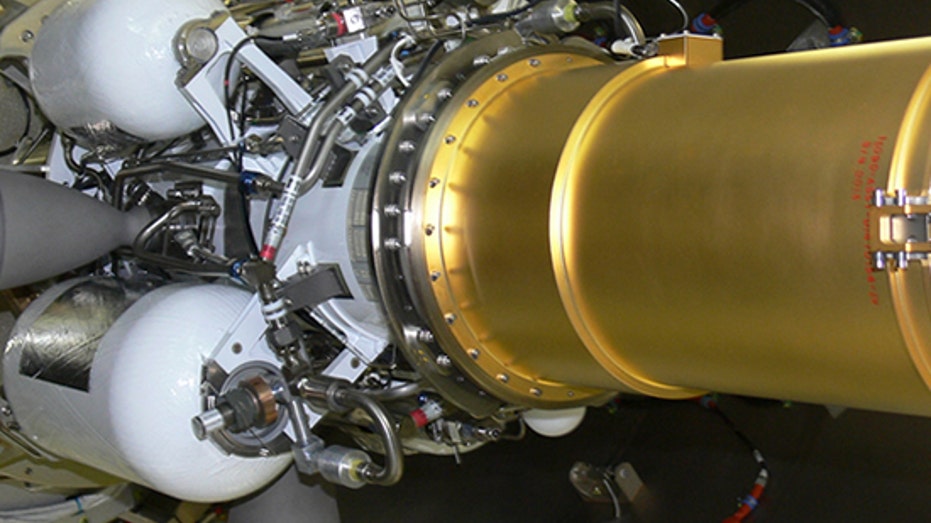Missile test puts Raytheon’s Kill Vehicle and Boeing’s Shield together to pulverize enemy ICBMs

Raytheon’s kill vehicle and Boeing’s shield work together to pulverize enemy ICBMs.
The "EKV" seeks out missile threats and demolishes them out in space before they even have the chance to come near American home soil.
The Missile Defense Agency, for the first time, live-fire tested Raytheon’s (NYSE:RTN) Exoatmospheric Kill Vehicle today and announced it successfully defeated an intercontinental ballistic missile threat.
At hypersonic speeds, the Raytheon-made interceptor – an approximately 120-pound spacecraft also known as the EKV-- operates in space to seek out and ram into threats, ultimately destroying them.

The successful test of Raytheon’s tech sends a clear message to North Korea that the U.S. has a strong shield that would defeat nuclear-tipped intercontinental ballistic missiles aimed at American cities.
How does the nation’s shield work against ICBMs?
As a ground-based interceptor, the EKV is a key element of Boeing’s (NYSE: BA) Ground-based Midcourse Defense (GMD) system. Around the clock, every day of the year, the GMD acts as the nation’s shield and first line of defense to defend against the threat of ballistic missiles attacks.
Today was the very first live-fire test against an ICBM class target for GMD and the United States defense system against ballistic missiles.
GMD has sensors on land, sea and space to detect threats. Once a threat is detected, a three-stage solid rocket booster blasts the EKV into space. When it is outside the Earth’s atmosphere, EKV takes the mission forward and uses advanced multi-color sensors to detect the incoming warheads.
Instead of using a traditional warhead, EKV destroys the threat by colliding with it -- a process known as “hit-to-kill.” EKVs can destroy missiles using nothing more than the force of this massive collision.
The threat is destroyed at a safe distance out in space to keep Americans safe on the ground.
The test
Missile Defense Agency’s test today involved launching a simulated intercontinental ballistic missile from the Marshall Islands. The objective was to shoot down the “threat” in space by firing an interceptor – the EKV- from the Vandenburg Air Force base in California.
North Korea and other countries have ratcheted up missile development and testing recently. This EKV test is part of ongoing testing planned well before the recent escalation with North Korea’s own tests, but considering the timing, it sends a very strong message.
This is the tenth successful intercept for the EKV. Raytheon’s SM-3 interceptor is another weapon that the U.S. Navy uses to defeat short- to intermediate-range ballistic missile threats. EKV and SM-3 together have a combined record of more than 40 successful intercepts in space.
What’s next for the nation’s shield?
The government is taking defense against missiles seriously and invested nearly $6 billion recently in the Redesigned Kill Vehicle (RDV) program alone.
The EKV design has not been significantly updated in more than ten years so a new kill vehicle is underway. The new program also addresses concerns about EKVs reliability and performance.
MDA initially invested $4.7 billion to build a Redesigned Kill Vehicle (RDV) with enhanced maneuverability and improved performance.
The Redesigned Kill Vehicle program is a joint project combining the best elements from Boeing, Lockheed Martin (LMT) and Raytheon concepts. The RKVs are expected to be ready by mid-2022.
And on May 22, MDA announced Boeing won a further $1.1 billion modification to the RKV development contract – to a total value of $5.8 billion.
The Multi-Object Kill Vehicle (MOKV) is another program underway. The MOKV will destroy multiple objects simultaneously. It will provide a key advantage by destroying both warheads and decoys at the same time.
Boeing, Lockheed Martin and Raytheon also won contracts to develop MOKV concepts each worth approximately $9.7 million in 2015.
Allison Barrie is a defense specialist with experience in more than 70 countries who consults at the highest levels of defense, a lawyer with four postgraduate degrees, and author of the definitive guide, Future Weapons: Access Granted, on sale in 30 countries. Barrie hosts the new hit podcast “Tactical Talk” where listeners get access to the most fascinating Special Operations warriors each week and to find out more about the FOX Firepower columnist and host you can click here www.allisonbarrie.co.uk or follow her on Twitter @allison_barrie and Instagram @allisonbarriehq.



















